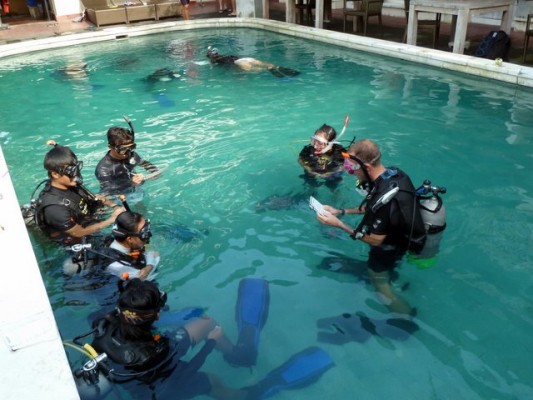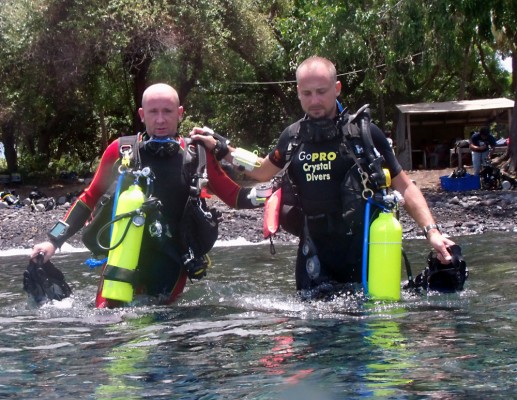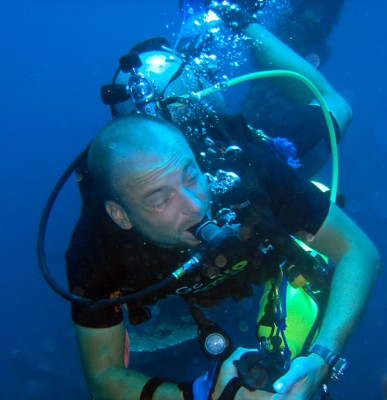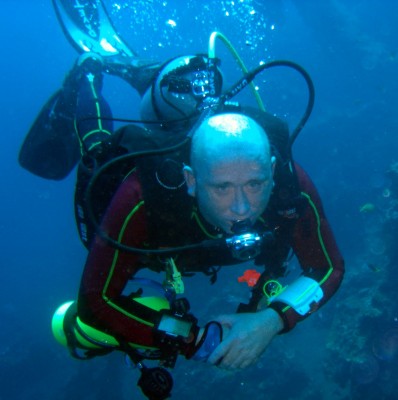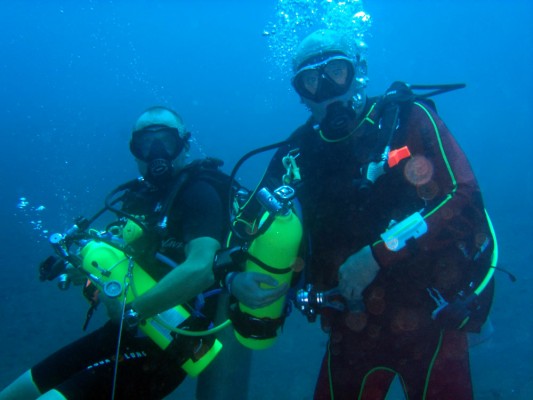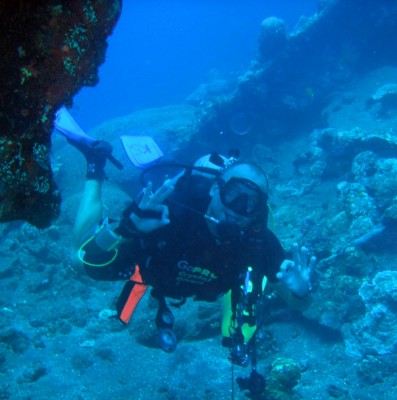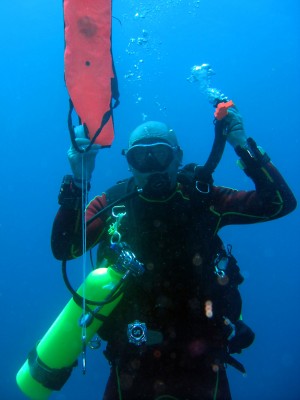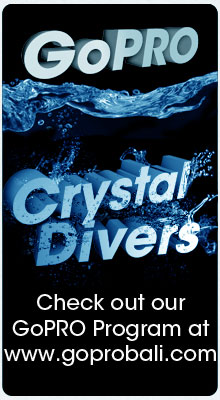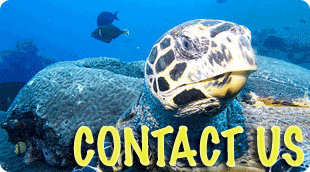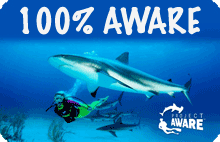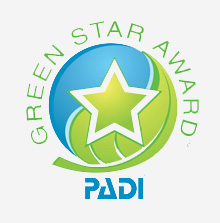Instructor Development Course
It was fun and tired course actually but it all paid with our good score during the course. Minni, Holly, Taka, Giovanni (as Staff Instructor Candidate), Else, and Paul presented and helped us through this course. We already know a little bit about the IDC because we have been here for 1 year and we saw many IDC before our own IDC but still it’s different from sit backside to front seat. Some of us joined two times IDC so they know and more confident to make some presentation and the theory as well.
Our progress was really good. All the mark was more than passing score. Maybe one or two mistake on the pool presentation because of breaking standard but it’s a learning process. We knew what the mistakes were and we learnt to avoid that in the future. Thanks to the entire instructor who patiently taught us to be better instructor. This course is
different from other courses, we need to stand in front of the class to talk about mistake question, selling some con-ed and dive equipments. We need to identify the mistake on the pool or open water that usually new students have it.
One more step to be a diving instructor and all of us would achieve a good score and wouldn’t let down the entire person who already spent many time to teach, trust, and support us all. Three days of IE started on 2nd of April and like Minni said not good luck because we all have the knowledge already.

The Self Reliant Diver
As part of my continuing education in diving, not just the gaining of experience, I decided that I would rather enjoy undertaking the Self Reliant Diver Course, a relatively new course from PADI. My aim being that once qualified, I could complete the necessary qualifying dives to undertake the instructor qualification.
First let me say that self reliant diving is not Solo Diving. The self reliant dive training provides you with another skill set that increases your ability for self rescue, identify and anticipate problems before they become life threatening and equip you with the skills to extract yourself from a situation should it arise.
Diving without a partner requires you to be willing to make the required commitment to train and equip yourselves properly and to accept the added risks involved. You must have the right attitude and ability to dive independently. This is true in other adventure sport activities such a solo rock climbing.
Diving without a partner requires the right attitude and equipment. This includes, but is not restricted to redundant air sources, specific dive planning and management of independent diving problems and emergencies. However, no amount of redundant equipment can effectively back-up a diver’s brain better than another individual
In simple terms, responsible independent scuba diving is not for everyone; however it does have a place. So, who should develop self –reliant diving skills and why? The course will appeal most to photographers, videographers, traveling divers, wreck divers and TecRec Divers. This is by no means an exhaustive list and will appeal to anyone with the necessary course pre-requisites.
Having completed the necessary pre diving study and knowledge reviews, we traveled to Tulamben on Monday 10th October to complete the three qualifying dives. Having gone through some very thorough pre-dive planning and briefing we kitted up ready for the first dive. We were certainly carrying much more equipment that normal; redundant equipment that is either critical for survival or critical to the dive objective’s success. This included a backup 4.7 ltr cylinder, complete with regulator and SPG. This would allow us the opportunity to initiate an emergency exit from a life-threatening situation without undue stress and with a minimum of confusion in the event of a major equipment malfunction.
During the first dive we were required to complete a number of skills, which were, with all standard and specialized equipment, conduct a buoyancy check at the surface, complete a 200m surface swim, demonstrate neutral buoyancy by hovering for one minute, perform a relaxed, nonstop 200 meter surface swim, demonstrate the ability to switch to a redundant air supply system, simulating a regulator free flow and breathe from the redundant air source for at least two minutes, perform a SAC rate swim by swimming for approximately five minutes at a level depth, recording the appropriate information for later calculation and deploy a lift bag or DSMB from the bottom. All skills were completed without issue and one skill that was practiced a great deal was switching to our alternate air source, which had to be done one handed and within thirty seconds.
After our required surface interval, we kitted up again for dive 2. During this dive we would have to complete further skills, comprising of demonstrating time, depth and gas supply awareness by writing the depth and cylinder pressure on a slate at 10-minute intervals, swim at depth for at least two minutes covering a distance of at least 18 meters without a mask. We would also have to whilst continuously swimming, simulate an out-of-air emergency and change from our primary air supply to our redundant air supply system within 30 seconds, then breathe from the redundant air supply system for at least two minutes, complete two navigation exercises, perform a SAC rate swim by swimming for five minutes at a level depth recording the appropriate information for later calculation and deploy a lift bag or DSMB from the bottom. Again, one of the key components and something practiced repeatedly throughout the dive was switching from our primary to redundant air supply. Again, all skills were completed and there was even time to interact with the aquatic life, especially the turtle that seams to have taken up residency on the wreck.
After lunch, we began our third and final qualifying dive. For this dive we were truly diving alone but it was not just a fun dive. The instructor gave us our briefing for the dive and set us our tasks. This was to demonstrate time, depth and gas supply awareness by writing the depth and time on a slate for each 20 bar of gas consumed, demonstrate turn around pressure and time limit awareness when either the pressure or time limit established during the briefing is reached by writing the time (if pressure limit reached first) or the pressure (if time limit reached first) on a slate, demonstrate navigational control and return to the exit with no assistance from the instructor and while continuously swimming, simulate an out-of-air emergency and change from your primary air supply to your redundant air supply system within 30 seconds At the conclusion of the dive we then had to deploy a lift bag or DSMB and ascend to the surface, stopping at 5 metres/15 feet for a three minute safety stop and most importantly surface from the dive within the established time frame and with no less than the planned pressure remaining in the cylinder.
The third dive was a new experience, diving alone and with no buddy. We have all no doubt at some time or other been alone for a short while but to do a whole dive alone was something new. What was noticeable during this dive was that you checked your dive computer more often than usual and you became more aware of your surroundings and where other divers were, just in case.
At the end of the third dive we had completed all the skill requirements and were now qualified as Self Reliant Divers. Twenty more self reliant dives and instructor qualification beckons. The benefits of completing this course are not about diving alone. It is about being self reliant, equipping you with the skills and knowledge to be a better diver, able to self rescue if the need ever arose. These are certainly skills that anyone should have and teaches you how to manage situations where you may be separated from your buddy for extended periods of time.
If you want to do the Self Reliant Course, then there is no better place than Crystal Divers. Take a look at the Courses Section and see what is entailed.
DDD
First Lesson
 First week in Sanur… We all start the class from open water diver. Only 6 of us because the other 2 will be came on 21th April due to they need to finish their degree. So they got exception for this scholarship. As Minni said we need to know all the things really careful, so take our time to know better about the details of the lesson.
First week in Sanur… We all start the class from open water diver. Only 6 of us because the other 2 will be came on 21th April due to they need to finish their degree. So they got exception for this scholarship. As Minni said we need to know all the things really careful, so take our time to know better about the details of the lesson.
First lesson:
Study about the form. STUDENT RECORD FILE… As we are the scholarship students we need to know any details on this form, in case in future one of our student ask what this meaning is. This form includes of 6 sessions: Student profile, Medical Statement, Diver Medical Questionnaire, Standard Safe Diving Practices Statement of Understanding, Liability Release and Assumption of Risk Agreement, and PADI Open Water Diver Course Record and Referral Form.
As a new to this theory, we translated it one by one together and it took 2 days for finish all the material.
Then for closing the day, Minni took us to fitting our equipment in DIVE MASTER… we tried our Mask, Snorkel, Boots, BCD and wet suit.. Nice to do that after whole day just stick with the form 😀 Thanks to Minni and Anita of coz who help us with choosing and fitting 
On the second day of the class, there were 2 instructors who want to take their licenses. They taught us DSD- Discover Scuba Diver- Since some of us already know bout it, it didn’t take long to teach us about that – Well I need to learn more about this actually :p Since I didn’t have any certificate or learnt this before the second time confined water practice, I stay in the class finished all the material given. Well just need to learn step by step I guess.
Ok now we move forward to next lesson :
The third day of the class that Friday, she gave us 2 books, the open water diver manual and the log book.
First we watch the section 1 video… it told us what is in the first chapter of this book, its better to see the video then study the book… In the book there are questions
1. for main objective s– we need to highlight the answer
2. Quick Quizes – we need to try answer before we see the answer in the bottom of the question
3. And Knowledge Review- it come after we finish read all the things in this section
After several discussion and headache – because too much reading, Minni took us to the pool. In there we learnt how to assemble and disassemble our equipments. Mr. Toto, the teacher for this practice really knows how to do this. He showed us how to do that before we do that by ourselves.
Assemble the Scuba Equipment:
1. Wet your BCD ( because the nylon stretches when wet)
2. Put the tank valve faces toward the BCD and slide the BCD to the tank
3. Measure about four fingers from the top to the band, tight it and check with lift the BCD by holding it. If the tank stand still, it’s already correct.
4. Check the O-ring ( if there is no o ring, don’t use the tank)
5. Smell the air ( if you smell oil in the air, don’t use it coz it posion!)
6. Open the dust cover from the regulator
7. Put it to the valve and tighten it until it is just finger tight (if yoke style) or screw the DIN style until its tight enough
8. Put the Low pressure hose to the BCD low pressure inflator.
9. Open the valve all the way and put back a little bit for the closing
10. When you open the air keep the SPG away from your face ( precautions if there is leaks) – put it in front the BCD faced down
11. Check the SPG while you are breathing from the Stage 2 and the octopus ( if air comes free flow put the lock to the – ), the SPG will not move when we check it
12. And finally put the octopus in the place ( the triangle) and the SPG in the jacket pocket
13. Lay the tank down
And Disassemble the Equipment
1. Lock the air by turn the valve clock wise ( remember ! finger tight)
2. Clean the regulator from air by push the purge button
3. Unplug the low pressure hose from BCD
4. Dry the dust cover with the air from tank and put it in the stage one
5. Put the regulator with the stage one below on the BCD
6. Untighten the BCD band and release the BCD from tank
7. Lay down the tank so you will not harm other people
We need to do these 4 times so we can remember how to assemble and disassemble the BCD to the tank (like I write all this :p)
After this we go to the pool with full equipment. In the pool Minni gave us some lesson about the first section before that she gave us the simple signal ok and problem …
First, she told us using the inflator to inflate and deflate the BCD. Inflate is putting the air to BCD so we can float and deflate is releasing the air from the BCD so we can sink. Second, how to use the regulator and breath under the water. CONGRATULATION we officially dive for the first time! Because dive is breath under water and we did that! Third, how to find the second stage if we lose it ( two technique for this : bend our body to the right with open hand and move our body backward and find the second stage then put it in our mouth then exhale/ push the purge button. Remember keep breath when you lose your second stage with a small bubble. Forth, how to use the octopus if we run out of air, make the “out of air” signal and your friend will come to you and give you the octopus/ alternated air source (REMEMBER TO KEEP BREATHING), hold your buddy right hand, then look to his/her eyes and give signal if its already ok. Fifth or the final lesson, clears our mask when the water come a half or full. Just put the water half or full to the mask then exhale from your nose while you look up to clear the mask. ( I have difficulty to do this because I let my self exhale from the mouth :p) after that we were swimming around the pool and the lesson for today was DONE! Before go home, we need to disassemble the BCD and clean all of the equipment! Cleaning it with the fresh water and put it in cool place ( not direct sunlight please but that day it was cloudy).
First week in Crystal diver all I can say is many many reading and translating but they know how to make some interesting things in between so we are not that bored with the books and dictionary.
One step to another step should we do. All of us  Its just a little step from the whole program..
Its just a little step from the whole program..








